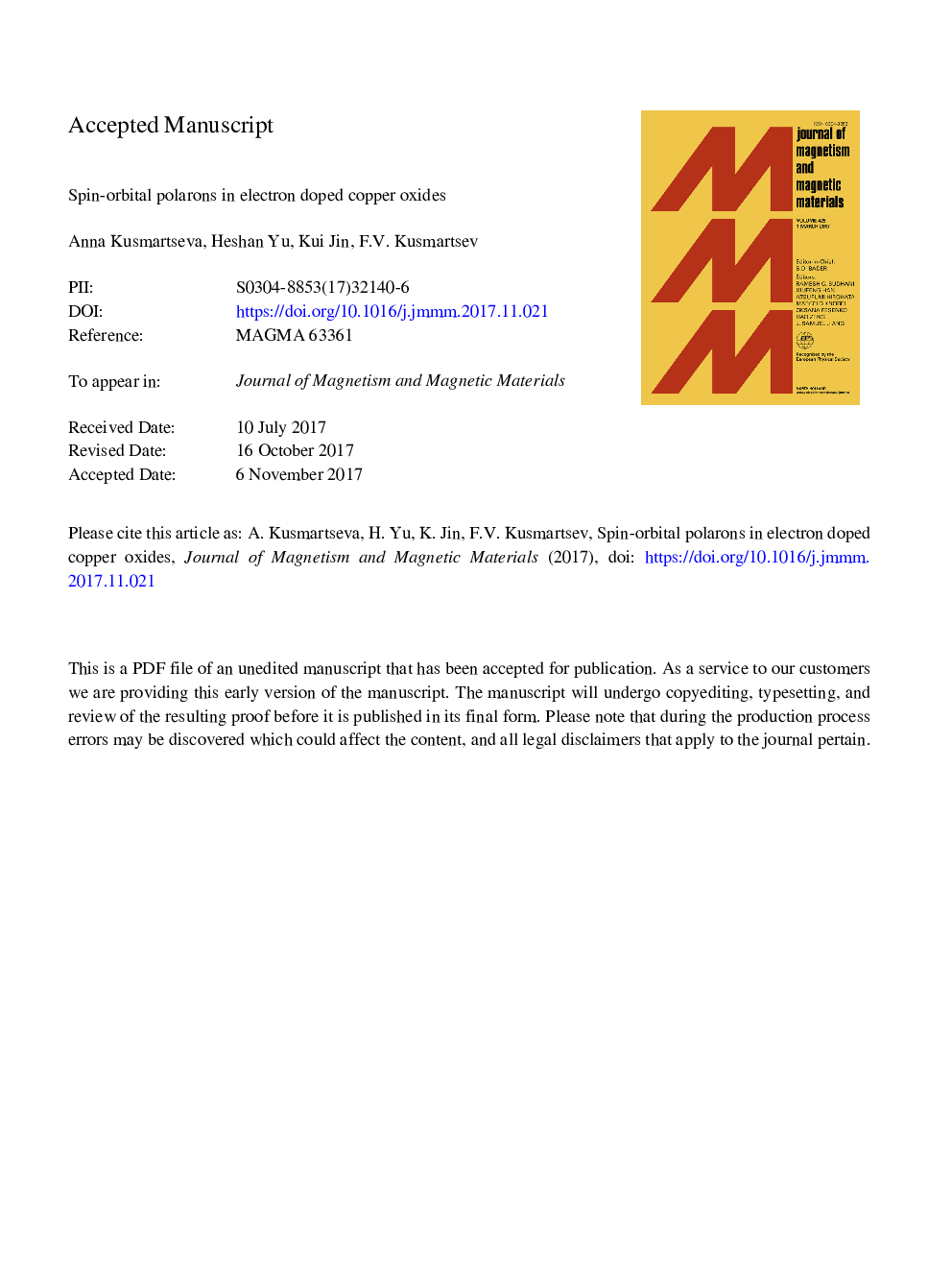| Article ID | Journal | Published Year | Pages | File Type |
|---|---|---|---|---|
| 8153160 | Journal of Magnetism and Magnetic Materials | 2018 | 12 Pages |
Abstract
Present work demonstrates the formation of spin-orbital polarons in electron doped copper oxides, that arise due to doping-induced polarisation of the oxygen orbitals in the CuO2 planes. The concept of such polarons is fundamentally different from previous interpretations. The novel aspect of spin-orbit polarons is best described by electrons becoming self-trapped in one-dimensional channels created by polarisation of the oxygen orbitals. The one-dimensional channels form elongated filaments with two possible orientations, along the diagonals of the elementary CuO2 square plaquette. As the density of doped electrons increases multiple filaments are formed. These may condense into a single percolating filamentary phase. Alternatively, the filaments may cross perpendicularly to create an interconnected conducting quasi-one-dimensional web. At low electron doping the antiferromagnetic (AFM) state and the polaron web coexist. As the doping is increased the web of filaments modifies and transforms the AFM correlations leading to a series of quantum phase transitions - which affect the normal and superconducting state properties.
Related Topics
Physical Sciences and Engineering
Physics and Astronomy
Condensed Matter Physics
Authors
Anna Kusmartseva, Heshan Yu, Kui Jin, F.V. Kusmartsev,
